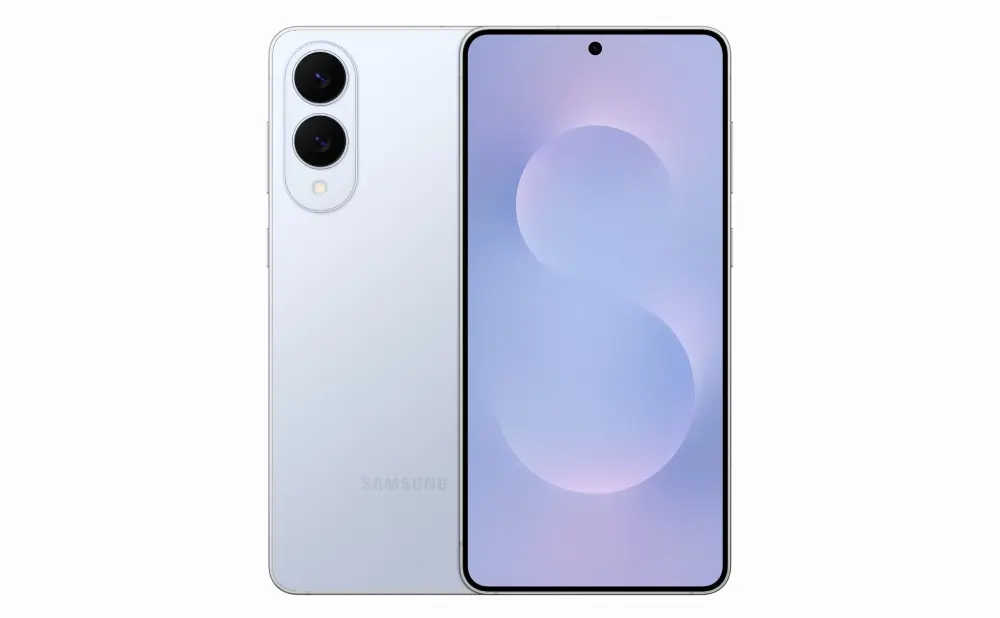With the rise of AI dominating the spotlight, it’s easy to assume hardware innovation has slowed down. But smartphone makers are beginning to step beyond the AI craze to bring something extra to the table. While others focus on larger batteries and compact designs, Samsung is charting a new course. In a bid to outpace Apple early, Samsung has unveiled the world’s thinnest phone yet — the Galaxy S25 Edge. Here’s a look at its full specifications, how it compares to current devices, and the compromises you might face if you’re considering picking one up.
Galaxy S25 Edge Ignites the Battle for the Slimmest Phone
The standout feature of the Samsung Galaxy S25 Edge is its design. Measuring just 5.84 mm in thickness and weighing 163 grams, it’s impressively slim and lightweight. The phone sports Gorilla Glass Ceramic 2 on the front, a titanium frame, and Gorilla Glass Victus 2 on the back, all wrapped in an IP68-rated body. Up front, you get a 6.7-inch QHD+ 2X AMOLED display with a 120Hz refresh rate and a peak brightness of 2600 nits.

On the performance front, the Galaxy S25 Edge is powered by the Snapdragon 8 Elite SoC. Contrary to earlier rumors, it features the standard 8-core version not the trimmed-down 7-core variant. Paired with this chip is 12 GB of LPDDR5X RAM and fast UFS 4.0 storage. Keeping it all running is a 3900 mAh battery with 25W wired charging support. The phone also supports wireless charging, though Samsung hasn’t disclosed the exact charging speed.
The Galaxy S25 Edge features a 200MP wide main camera with an f/1.7 aperture and a 1/1.56″ sensor size. It’s accompanied by a 12MP ultrawide lens with an f/2.2 aperture. On the front, there’s a 12MP f/2.2 selfie camera.

Connectivity-wise, the Galaxy S25 Edge comes equipped with a USB 3.2 Gen 1 Type-C port that supports display output for Samsung DeX. It also includes Wi-Fi 7, Bluetooth 5.4, Ultra-Wideband (UWB) support, and an ultrasonic under-display fingerprint sensor.
What Sets the Galaxy S25 Edge Stand Out?
At just 5.84 mm thick, the Galaxy S25 Edge claims the title of the world’s slimmest phone. Its sleek design makes it compact and highly portable. While slim phones may appeal to a more niche audience, there is still a demand for such devices, and the Galaxy S25 Edge caters to that perfectly.

Modern Android phones have become noticeably slimmer, thanks to Silicon Carbon batteries, yet most still measure around 8–8.5 mm in thickness. While a difference of just 2 mm may seem small, it dramatically alters the in-hand feel, much like the shift from a 6.7-inch screen to a 6.3-inch one. That’s why we’ve compared the Samsung Galaxy S25 Edge to compact phones.
The newly launched iQOO 13, with a thickness of 8.13 mm, and the OnePlus 13T at 8.2 mm, are among the thinnest Android devices available.. OPPO’s latest foldable, the Find N5, is 8.8 mm thick when folded and just 4.21 mm when unfolded, although it features a different form factor altogether.Rumors suggest that Samsung’s upcoming Z Fold 7 could surpass the Find N5’s slimness, With a rumored thickness of only 3.9 mm when unfolded, down from the current 4.1 mm. This suggests that 2025 may be the year of slim phones, particularly within Samsung’s lineup.

Considering everything, the Galaxy S25 Edge’s 5.84 mm thickness is an impressive feat for Samsung and will likely remain the slimmest slab phone for some time, until the release of Apple’s iPhone 17 Air. Many associate a slim design with a premium feel, while others appreciate its portability. If either of these qualities is important to you, this phone could be the perfect choice.
The S25 Edge could serve as a catalyst for the rise of new slim phones in the Android market. With Apple reportedly working on a 5.5 mm thick iPhone 17 Air, other Android manufacturers might follow suit, joining Samsung and Apple in this new direction. At least then, we’ll have something fresh to discuss, rather than just “disruptive” AI features.
The Trade-offs of Being the Thinnest
Let’s be honest, a 3900 mAh battery likely won’t deliver impressive screen-on time and could be one of the biggest drawbacks of the phone. This raises the question: perhaps Samsung should have taken more time to thoroughly test Silicon Carbon batteries before rushing to release the device.
At MWC, Tecno unveiled its Slim Spark concept, which was just 5.75 mm thick and still packed a sizable 5200 mAh battery. Samsung could have addressed a major pain point by incorporating Silicon Carbon batteries, but instead, the goal was to beat Apple to the market. And, by all accounts, Samsung appears to have succeeded in that.

The slim form factor also means there’s no room for a telephoto sensor, which is another limitation. Additionally, concerns about structural integrity are another important factor to consider.
While it may not boast the largest battery or the most versatile camera, the Galaxy S25 Edge stands out as the slimmest flagship slab phone on the market. That distinction alone makes it a noteworthy player in the current Android phone landscape. Though not perfect, the S25 Edge could inspire other manufacturers to pursue the goal of slim phone perfection.

The Galaxy S25 Edge is now up for pre-order on Samsung’s official online store, offering two storage variants — 256 GB + 12 GB and 512 GB + 12 GB. The 256 GB model is priced at $1,099, while the 512 GB variant costs $1,219 (but is currently available for $1,099 as part of a limited-time offer). You can choose from three color options: Titanium Icyblue, Titanium Silver, and Titanium Jetblack. Pre-orders are expected to ship by May 30.
What do you think of the Samsung Galaxy S25 Edge? Share your thoughts in the comments below!




